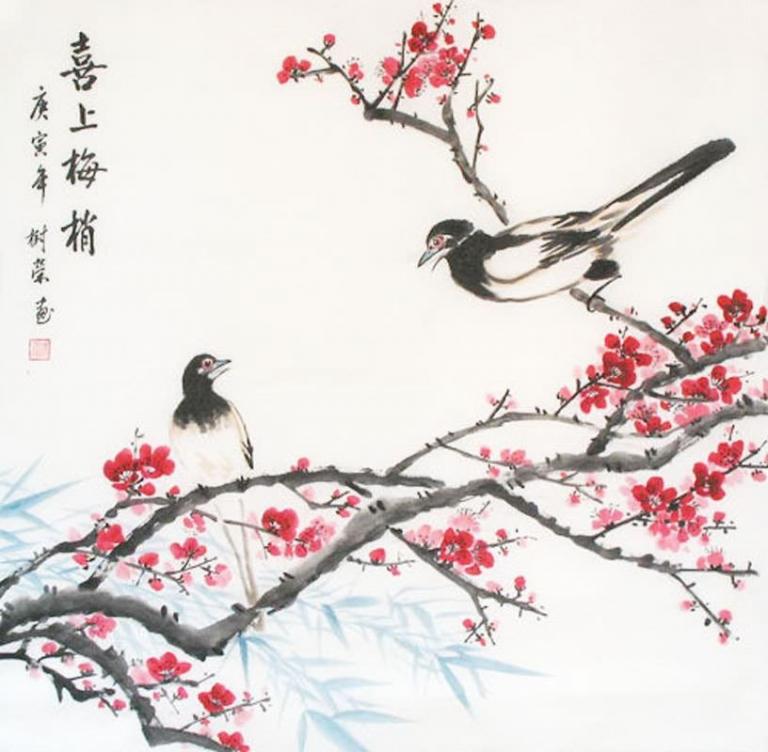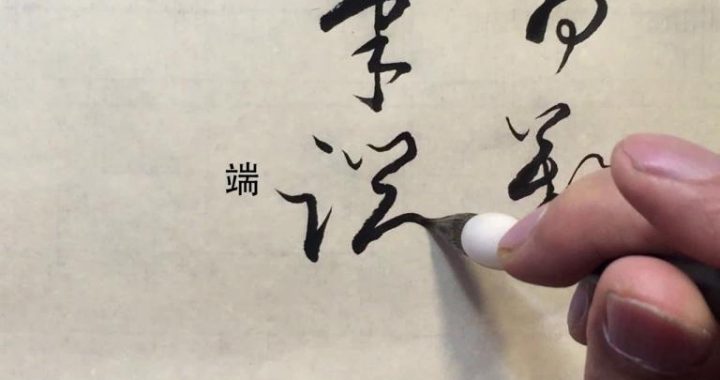Charming flowers and birds in Traditional Chinese painting
7 min readFlower-bird painting rose in the Tang Dynasty. Most Tang flower-bird paintings were drawn on screens and round fans, depicting rare flowers and birds liked by court aristocrats. In the Five Dynasties Period, flower-bird painting underwent importantdevelopment and formed different styles, among which “the different styles of Xu an Huang”were most prominent. They continued from the Five Dynasties to the Northern Song Dynasty, and deeply influenced the development of flower-bird painting.
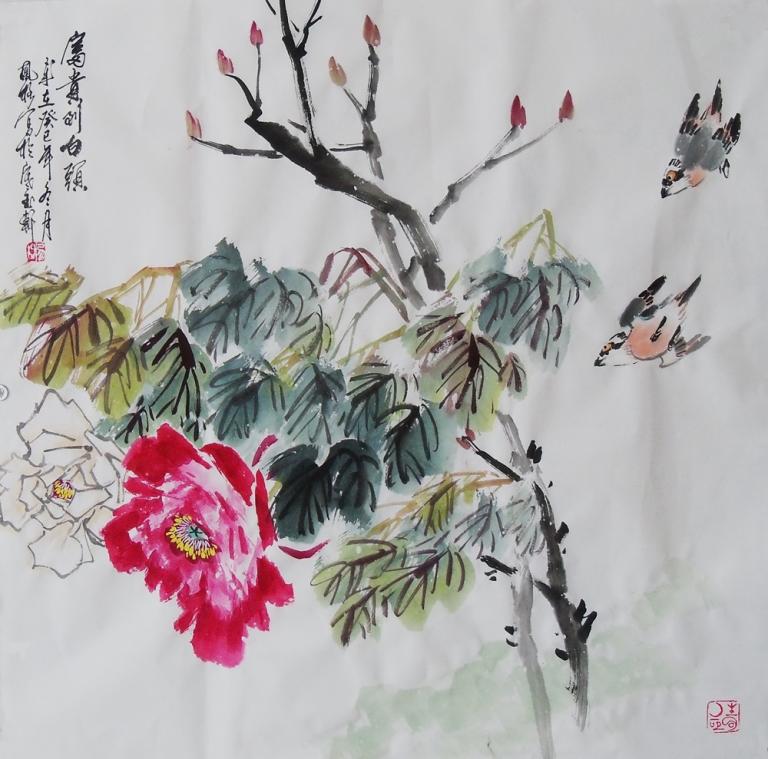
Xu”in”the different styles of Xu and huang”refers to Xu Xi (886-975), who was good at drawing aquatic birds, wild bamboos, vegetables, fruits, etc. His paintings can only be investigated through written records because none have been passed down from ancient times. According to Xuanhe Painting book, he drew branches, leaves, stamens and sepals with ink and then applied color, so their vigor and spirit are unprecedented”. This shows use of ink supplemented with color was his characteristic Through natural use of the painting brush and rough imitation, he could demonstrate the state of nature. Huang”in”the different styles of Xu and Huang”refers to Huang Quan(?-965), who depicted rare flowers and birds in a careful and magnificent style, achieved a high degree of unity between form and spirit, and manifested the aestheticsentiments of people in the imperial court. His painting style became the standard of flower-bird painting in the Song Dynasty. Huang’s magnificent style and Xu Xi’s natural style reflect two different feelings and aesthetic tastes of aristocrats in the imperial court and scholar-bureaucrats out of office Double Happiness by Cui Bai(Northern Song Dynasty). A hare on the ground and two birds above confront each other in autumn. They echo each other and form an integrated whole Though imperial court painting still had the political function of “educating people and improving human relations”to some extent in the Song Dynasty, it gradually shifted towards aesthetic pleasure, flower-bird painting for appreciation gradually became the main type, and the overall painting style seemed exquisite and graceful. In the Northern Song Dynasty, Zhao Chang, Cui Bai(1004-1088), Zhao Ji(1082-1135)etc all made unique achievements in flower-bird painting creation. The themes of their works include beasts, fishes, birds insects, flowers, vegetables, fruits, etc, and the forms of their works include sketches, horizontal hanging scrolls, round silk fans and scrolls and large works
Zhao Chang was good at drawing flowers and fruits and also able to draw grass and worms. He liked drawing twigs and gave attention to depiction of shapes. His works are very lifelike–for example, Apricot Flowers vividly depicts beautiful white apricot flowers like accumulated frost and snow with fresh images and light colors using a very realistic method
Xuanhe Painting Book contains such a description of Cui Bai: He was good at drawing flowers, bamboos, feathers, water chestnuts, lotuses, wild ducks, wild geese, Taoists buddhists, ghosts immortals, mountains forests birds and beasts double the late autumn scene of rustling autumn wind and withering trees. the birds an o Happiness is Cui Bai’s representative work. It is a vertical colored silk scroll depictir beasts were drawn delicately with strokes full of changes, and trunks on the slope Were drawn with broad strokes. There are natural sentiments in the depiction of realit
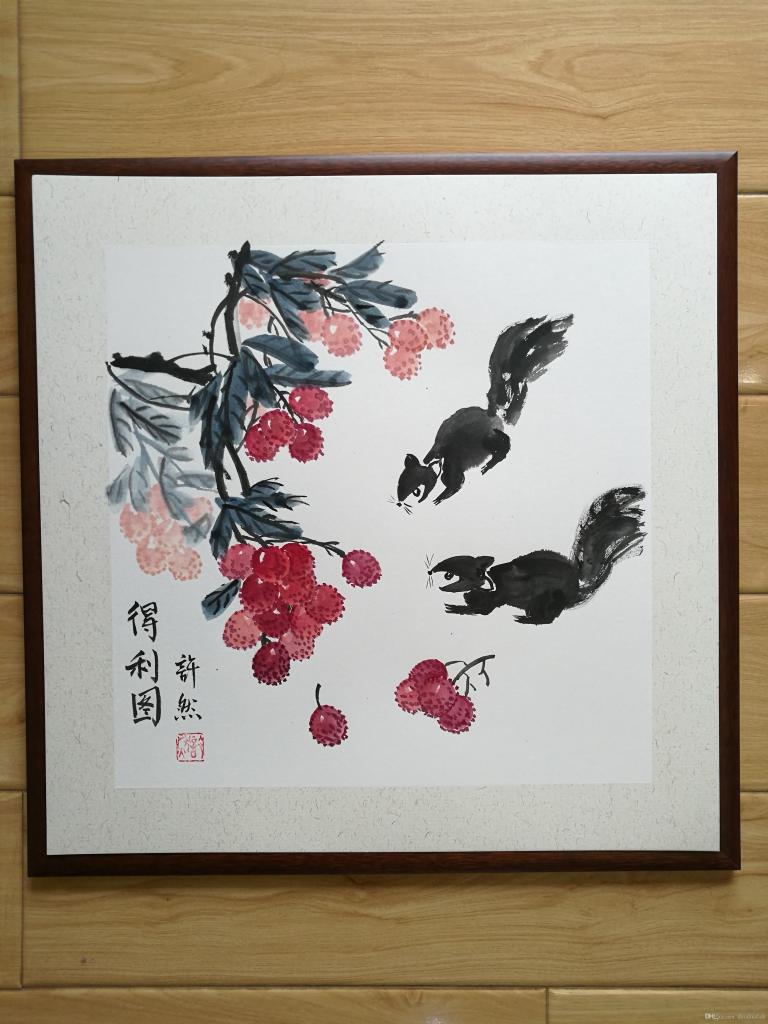
Though Emperor Huizong of the Song Dynasty Zhao Ji might not be a good emperor, he can be called an artist. He loved painting, and attached great importance to building painting academies. Zhao Ji’s paintings followed the painting styles of Xui and Huang Quan in the Five Dynasties. He adopted many techniques and favored elaborate-style ink paintings. For example, his Auspicious Cranes depicts Xuande Gate in Bianliang surrounded by rosy clouds In the painting, a lot of cranes hover above the palace in different postures, and the sky is full of rays of sunlight. The whole painting full of life shows the noble manner of the wealthy royal family
Northern Song imperial court flower-bird painting requires precise and neatshapes and pursues magnificent and elegant colors, giving equal emphasis to similarity in formand “similarity in spirit. Its achievements represent the highest level of imperial court painting of that period. It is a unique style in the history of Chinese flower-bird painting
In the Ming and Qing dynasties, another style of flower-bird painting emerged The representative artists include Mountain Man of the Eight Greats(1626-1705)Zheng banqiao(1693 -1765), etc.
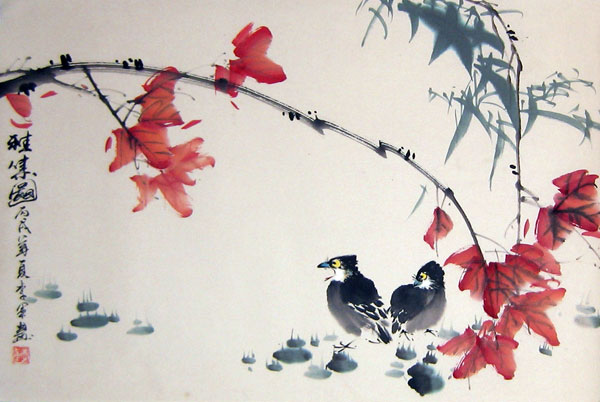
The name of Mountain Man of the Eight Greats is Zhu Da. He was a descendent of the imperial clan of the Ming Dynasty. After the fall of the ming dynasty he left home and became a monk with the religious name of “Mountain Man of the eight Greats As a descendent of the imperial clan of the ming dynasty mountain man of the eightGreats suffered pain caused by the conquest of his country and the wreckage of his family, had a proud and aloof personality, acted weirdly, and often gave vent to his inner resentment through poems, calligraphic works and paintings. He used the painting brush freely to compose simple pictures without applying much ink, alway achieving a kind of desolate artistic conceptions. Therefore, Zheng banqiao evaluated his painting as having more tear stains than ink spots”On the basis of the impressionistic flower-bird paintings of chen Chun (1483-1544) and Xu Wei (1521-1593), his flower-bird paintings developed into highly impressionistic broad-stroke paintings with the characteristics of exaggerating the flowers birds, fishes and worms drawn symbolically, highlighting the themes with unusual images and simple shapes and even drawing birds and fishes “staring at people”to manifest his proud, aloof and cynical personality and thus create unprecedented shapes of flowers and birds. The paintings of Mountain Man of the Eight Greats were quite famous then and exerted far-reaching influence on later generations. His works handed down from ancient times include peacocks and peonies, sketch book ink flowers miscellaneous flowers Flowers on the river, etc
Zheng Banqiao was one of the Eight Eccentrics of Yangzhou in the Qing Dynasty He was not only a painter, but also a calligrapher and writer. He served as a county magistrate, offended his superior after pleading for the people and was dismissed from office. Later he settled down and lived on selling calligraphic works and paintings in Yangzhou. He was good at drawing bamboos, orchids pines, chrysanthemums, etc especially famous for his bamboo paintings, and reputed as the best bamboo painter in China’s painting history. Bamboos have joints before coming out of the ground and remain modest even when they reach the cloud symbolizing noble personality the bamboos drawn by Zheng Banqiao fully manifest this plant’s unique meaning in China’s traditional culture, which has a lot to do with his unique creation process. he wrote in Inscriptions on Painting: Once, while lodging at a riverside hostel in early autumn, I got up in the morning to look at the bamboos and saws the mist, sunlight and shadows floating amongst their sparse branches and dense leaves. Greatly inspired I wanted to paint them. However, the bamboos in my mind were not the same as those I had seen. After preparing my ink and laying out my paper, I lifted the brush to paint Suddenly the bamboos had changed. They did not resemble the bamboos i pictured in my mind. Having a conception before starting to paint is a guiding principle; however, the potential for variation outside that principle is what is interesting, and this does not apply to painting alone The process of drawing bamboos from”the bamboos the eyes”to the bamboos in the mind”and the bamboos drawn by the hand”manifests profound truth: the bamboos the eyes are the basis, the bamboos in the mind”are images in the observer’s mind created by the observer and the bamboos drawn by the hand”are not completely the same as”the bamboos the eyes”and the bamboos in the mind”but recreated. Zheng Banqiao wrote a poem for his Ink Bamboos: “All branches and leaves have feelings Therefore, the bamboo stalks and leaves drawn by him all have life, and seem very charming, natural and rational in shade and shadow fully manifesting the life and spirit of the bamboos drawn for the bamboos sake
In modern times, flower-bird painting underwent new development. Li Kuchan(1899-1983) was a great impressionistic painter in the modern painting circles. Hisflower-bird paintings are excellent. He drew on the artistic techniques of earlier painters such as Shi Tao, Mountain Man of the Eight Greats and Wu Changshuo(1844-1927), formally acknowledged Qi Baishi(1864-1957) as his teacher, and created a unique style of impressionistic flower-bird painting. Li Kuchan often created paintings themed on pines, bamboos, plum blossoms, orchids, chrysanthemums, stones, lotuses, mynas, cormorants and eagles. Largeness”is one of his paintings salient characteristics. For example, Summer is a painting formed by four l-Zhang-2-chi pieces of Xuancheng paper with an area of 22 square meters. The lotus flowers drawn are like basins the leaves are like umbrellas. and the stalks are like arms. The larger the painting the more freely he could wield the painting brush He liked using dense ink while painting The majestic broad strokes with great momentum seem casual but simple.His representative works include Summer,Eagles,Orchids and Bamboos lotuses the smell of autumn etc
